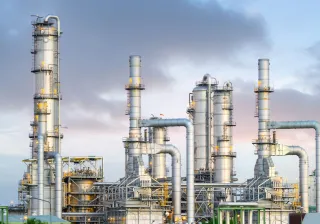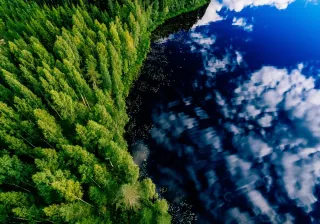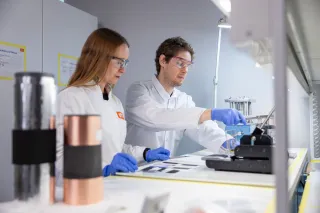Combating climate change is a complex challenge, as almost all human activities – from industrial production to transportation, housing and agriculture – produce greenhouse gases in one way or another. Most greenhouse gas emissions, CO2 in particular, can be controlled by shifting to renewable and low-carbon forms of energy. During the transition period, it is necessary to capture the CO2 from the flue gases of energy production and other sectors.
However, there is a significant share of emissions that are difficult or impossible to reduce. Since these emissions originate from countless minor sources, means such as electrification of processes do not work, or no notable technologies have been developed to reduce them. It is very difficult to fully control, say, methane emissions from agriculture. Air transport is also still dependent on fossil-based aviation fuels and produces around 2% of total emissions globally.
We will probably never get fully rid of fugitive emissions or otherwise difficult-to-control emissions, but we must reduce their impacts on climate change. It may also be necessary to reverse the effects of greenhouse gases already emitted to limit warming below 2°C. This requires direct removal of CO2 from the atmosphere, enabling so-called negative emissions. The most traditional and functional methods for this are afforestation, reforestation and soil improvement, which may also have other positive impacts on ecosystems and agricultural yields. However, these methods have certain critical requirements, such as availability of arable land and fresh water, which limit the potentially achievable rate of negative emissions. Similar problems restrict the use of bio-CCS (bioenergy with carbon capture and storage) technologies in which CO2 is separated from the flue gases of biomass combustion and stored underground. Therefore, these methods alone are unlikely to be sufficient to produce the necessary negative emission levels.
The DAC process enables negative emissions
Direct Air Capture (DAC) provides an alternative and complementary technology to other negative emission methods. DAC requires a smaller land area than, for example, afforestation or reforestation, does not compete with food production, and its sequestration potential does not decrease over time as happens with growing forest or arable land. The DAC process allows concentrating CO2 from ambient air to pure carbon dioxide, which can be either stored permanently underground or used with green hydrogen for the manufacture of carbon-neutral fuels, chemicals or plastics.
The main DAC technologies today are based on either alkaline solvents or solid sorbent materials, and their commercialisation has been ongoing for several years. The Canadian Carbon Engineering is developing a process based on the use of calcium hydroxide, while the Swiss Climeworks uses solid sorbents to capture CO2. In Finland, the DAC technologies are applied by the startup companies Soletair Power and Solar Foods. Currently, the biggest carbon capture and storage project in the world is the Orca project plant in Iceland, using Climeworks DAC equipment, which captures and stores approximately 4,000 tCO2/year. Carbon Engineering is planning plants that can capture up to 1 million tCO2/year. It would require thousands of such plants to achieve the rate of negative emissions needed to significantly combat climate change.
Large-scale commercialisation only possible through research
The main obstacle to the scalability of DAC technologies is their high price, which, depending on the estimates and technologies used, is in hundreds of euros per tonne of CO2 produced. These estimates can be compared to the carbon price used in emissions trading, which is expected to rise above EUR 100/t of carbon dioxide in the next few years. However, it has been estimated that over the next few decades the DAC technologies will bring the price of carbon capture well below EUR 100/t of CO2. If the price of CO2 produced by DAC were to fall below the emissions trading price, it would be a significant step towards the necessary annual removal rate of billions of tonnes of CO2. However, this will be unlikely to happen without major investments in the R&D of DAC technologies.
VTT is studying a DAC process based on solid sorbents. In the process, air is blown through a porous sorbent bed, which chemically binds carbon dioxide and humidity from air. Heating the bed to approximately 80–100°C releases the carbon dioxide and water from the material. When the water has been separated, almost pure carbon dioxide is produced. The most important part of the process are the sorbents used. VTT is collaborating with universities, trying to improve their capacity to bind CO2, durability and other properties, for example, in the DAC2.0 project. The characteristics and price of these materials affect the overall cost of the process the most, which makes this R&D extremely important in order for DAC technology to achieve the commercial potential required. In addition to academic cooperation, it is important to test DAC technologies in practice and develop materials that bind carbon so that the scale of carbon capture can be increased from grams achieved in laboratories first to kilograms and, ultimately, to tonnes in a sustainable manner. To achieve this, the development of DAC technologies also requires involvement of larger industrial actors.
The basic principle of a sorbent-based DAC process: Carbon dioxide and water are separated from air onto a sorbent, which releases them when heated. When water is separated from the produced gas, the process produces almost pure carbon dioxide.







